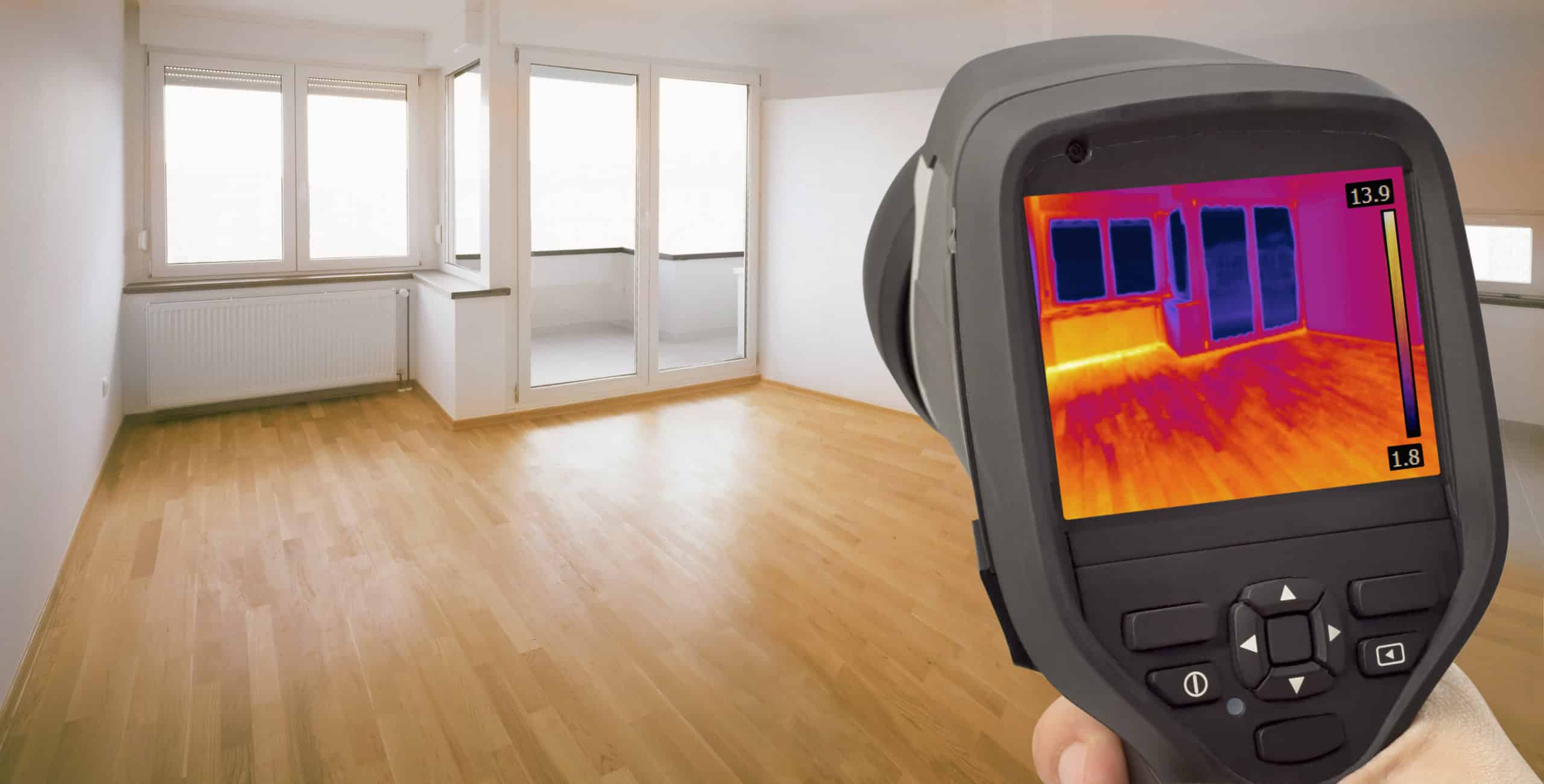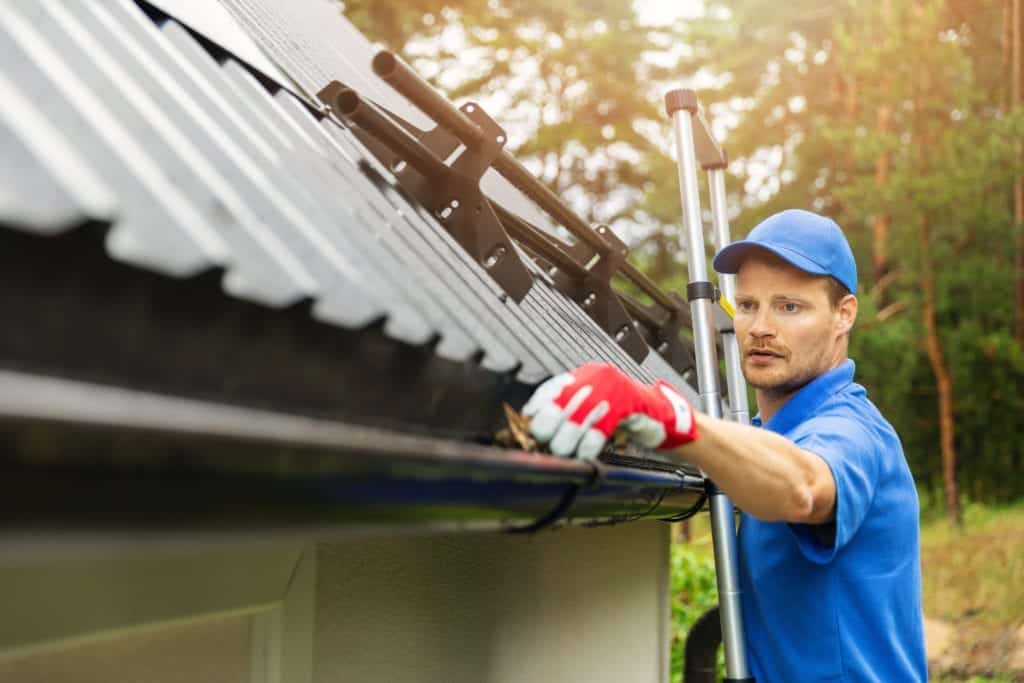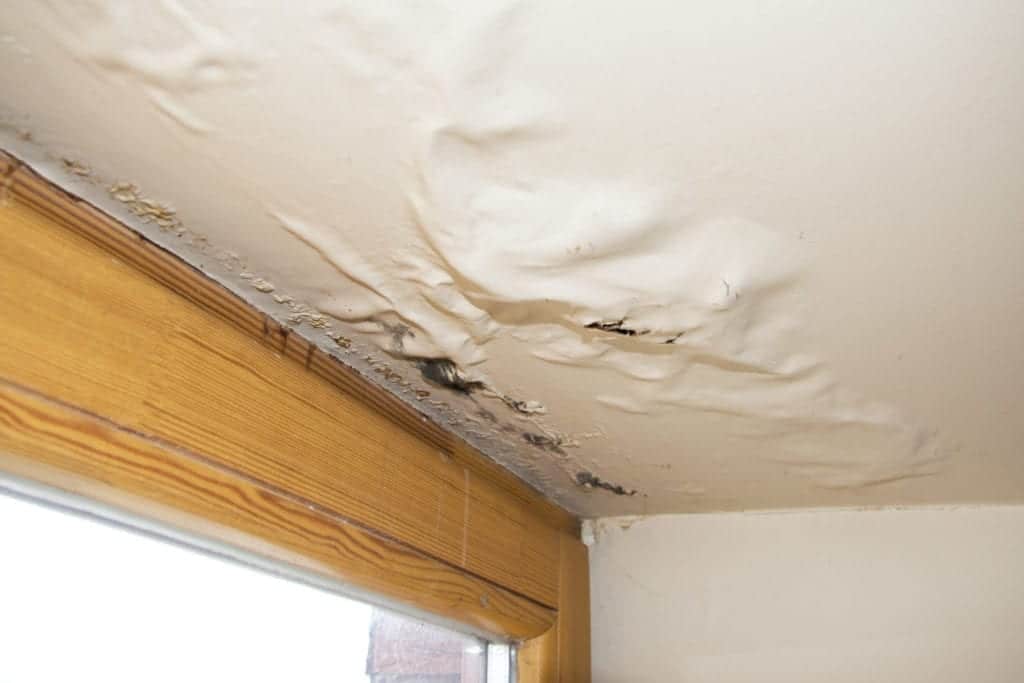
A water leak inside a wall can be hard to find. Plumbing is behind the drywall so we can’t see it and we find out there is a water leak after there are thousands of dollars of damage.
There are however signs to look for so we can find the leak early. The earlier it is found, the less damage will have occurred. Let’s look at the causes of a water leak, the signs of a leak, how to find a water leak inside a wall, and how to fix it.
What causes a water leak in the wall
Many things can cause a water leak in a wall. One of those is faulty plumbing. If pipes are in the floor, they can become weak over time and burst. Pipes can burst from extreme cold and freezing temperatures.
Additionally, older homes with hard water may see issues with corroding on metallic pipes. Even pipes can be punctured in a weather maker.
Polybutylene Piping
This is a type of plastic resin piping used in homes in 1978-1995 and known as the “piping of the future” and a replacement for copper. This piping is found mostly in homes in the southern half of the U.S., but all over other areas as well.
Polybutylene seems to react with chlorine and other oxidants found in water that cause it to have minor cracks. Ultimately, a home inspector can tell you if you have this in your home.
Other Areas With Water Leaks That Could Show In The Wall

Roof Leaks
The roof has eaves or downspouts, and gutters that can become clogged. Check to make sure that the water flows easily through this area. If it has a lot of pine needles and other debris clogging it, this could be a source of your problem. For not only this reason, keep this area clean of debris as much as possible to allow water to flow freely to avoid issues.
Be sure you are also keeping up with regular roof maintenance.
Moisture Intrusion Coming From Exterior Walls
Sometimes water can come in through the home from the outside walls. Builders paint houses using cheap paint and this can allow water to come in.
As an example, if you pressure wash the outside of your home to get the dirt and rust from the sprinkler system off, you may find moisture intrusion occurs. Be careful with this as it can cause mold to grow in the home and allow unwanted pests indoors.
Underneath the Slab
Water can also come from underneath the slab, and it may not be a plumbing leak. Wet carpet, warm tiles, or flooring may be a sign and the inspection shows it is not coming from the walls.
Sometimes this happens due to shifting of soil under the house, poor plumbing, poor construction, or aging systems. An inspector can diagnose the problem and refer you to a reputable plumber if needed.

Signs of a Water Leak in the Wall
1.Wet spots – Water will leak in the piping system and then in effect, will puddle on top of concrete or stone. It leaves wet spots and will make the wall look like it is sweating and you will need to investigate.
2.Mold or mildew– Early stages will look like small brown or black dots in various corners of the house. Calling in a specialist to investigate as it will be difficult to get to the leak and rid the home of the mold.
3.Peeling or bubbled paint– Paint that is peeling or bubbling often means water has come in contact with the wall. Many homes use water-based paint. Therefore, when the paint is near water it will start to crumble and pull away from the surface.
4.Warped or stained wall or ceiling– This would be water coming through and a good idea to investigate.
5.Musty smell– The smell can be potent and you may smell it before you see any discoloration in the walls. If you do notice it, call a professional home inspector right away.
6.Dripping sounds – In the event that you hear or see a drip when the faucet or shower is off, this may be an early sign that there is an issue.
7.Increase in water bill– Water leaking from pipes will raise your water bill. If you notice an increase in the bill and it isn’t due to more people using water in the home, it may be time to call in a professional for help.
8. Hot/Warm Spots – If the hot water is leaking you can feel the temperature of the surface. For example, a pinhole hot water leak from underneath the slab may make a few tiles always warm to step on.
Check the water meter
The water meter is usually located outside by the driveway or footpath. In colder climates, it may be located in the basement.
First, you will record the number on the water meter, second, turn it off for about 3 hours. After 3 hours, turn it back on and record the number. If there is an increase in the number, then you know you have a leak in the indoor plumbing. This is good information to provide to a professional home inspector.
How to Fix A Water Leak Inside a Wall
You should consider all possibilities of where the water could be coming from. Depending on the source, ultimately will tell you how to fix the leak/water intrusion. This is why it is important to call an inspector.
Anytime you are messing with a leak or something in the walls, it is a good idea to call a professional home inspector to come to your house for a diagnosis.
This is not something for someone who is untrained to mess with. If the exact wall location is not known for the leak, a moisture meter will be used to find the areas in the wall that have water.
In addition, once the professional home inspector can pinpoint the location, a thermography scanner is used to find the water issue. This scanner will be able to tell where the “cold parts“ or warm are on the wall and where the leak is. If the home inspector finds this, he/she will recommend you call a professional plumber to come out.
Conclusion
No one wants to find signs of water leaking in the home. Unfortunately, there are many other expenses a homeowner incurs already. But, if found early, it may not be as expensive to fix. If you suspect you may have water leaking, drop us a line below or contact us at Atkinson so we can take a look for you!



